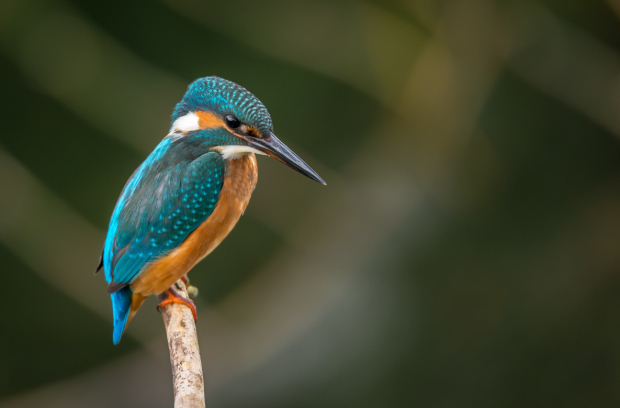Key take-away points from biodiversity webinar
Discussion details
INTPA F2 organised a biodiversity webinar on 9 December 2020. The main objective was to enhance the knowledge and understanding of the Green Deal's main priority areas with respect to biodiversity in external cooperation. Conrad Aveling, from the B4Life Facility, shared with Capacity4dev the key take-away points from this online learning event.

The online event was divided into three parts. The first session focused on Biodiversity policy and planning in external action. The second was on Integrated Landscape (and Seascape) Management (ILM) presenting examples of the kinds of initiatives that can be part of an ILM approach and the third session was an overview of the global (cross-cutting) programmes.
Part 1: Key take-away points on Biodiversity policy and planning in external action
- The Planet is central to the three other P’s of development – People, Prosperity and Peace;
- The new EU Biodiversity Strategy 2020-2030 is an important component of the Green Deal[1];
- Commitments made during the 2012 UN Biodiversity Conference of Parties in Hyderabad, India (doubling the Official Development Assistance on biodiversity), are on target, but more ambitious targets are to be set for the 2021 UN Biodiversity Conference in Kunming, China. The Multiannual Financial Framework (MFF) 2021-2007 has an overall target of 7.5% for biodiversity, and the Neighbourhood, Development and International Cooperation Instrument (NDICI) must significantly contribute to this target;
- The Larger than Elephants, Larger than Tigers and Larger than Jaguars strategy documents guide the programming process in terms of prioritising biodiversity-rich landscapes and seascapes;
- The Team Europe Initiative is proving to be a highly useful exercise in joint priority setting.
Part 2: Key take-away points on Integrated Landscape (and Seascape) Management
-
ILM initiatives will target areas of high biodiversity value (usually containing protected areas) within multi-use landscapes (& seascapes) providing the essential natural capital & ecosystem services that sustain local livelihoods[2], the Key Landscapes for Conservation and Development (KLCDs);
- Various examples of Community-Based Natural Resource Management (CBNRM) were given to show how participation and buy-in by local communities is critical for successful biodiversity conservation and development of sustainable livelihoods[3];
- Conservation agriculture, agroforestry, re-forestation (including mangrove restoration), grazing and fire management, value chain development are all important activities that can be developed with local communities to preserve soil carbon and fertility (and the accompanying ecosystem services), and conserve biodiversity in Key Landscapes for Conservation and Development (KLCDs)[4];
- Integrating watershed protection is part and parcel of ILM. A River Basin Management approach for the Mara River transboundary basin is an enlightening example[5].
Part 3: Key take-away points on Global (cross-cutting) programmes
Three global programmes were presented to illustrate how the Commission addresses cross-cutting biodiversity themes:
- Tackling illegal wildlife and forest crime through support to the International Consortium on Combatting Wildlife Crime (ICCWC) and support to CSOs;
- Knowledge management for better conservation decision making. In particular the BIOPAMA programme;
- Food security through sustainable use of wildlife. The EU-ACP Sustainable Wildlife Management Programme improves how wildlife hunting is regulated, strengthens management capacities of indigenous communities, develops sustainable production of meat and fish as alternatives to wild meat, reduces demand for wild meat in urban areas and promotes a One Health approach – particularly relevant in light of the current COVID-19 pandemic;
- Capacity building. Finally, all biodiversity interventions by the EU are underpinned by a community rights-based approach ensuring Free, Prior and Informed Consent (FPIC), grievance mechanisms and attention to gender issues.
Credit: Photo © Vincent van Zalinge on Unsplash
[1] The external component of the strategy has three main elements: International Ocean Governance (marine biodiversity in SIDS, tackling IUU, etc); Trade policy to support ecological transition (wildlife trafficking, deforestation-free commodity chains, etc); International Cooperation (supporting field-based initiatives that link conservation and development).
[2] ILM interventions in these multi-functional landscapes must be holistic, cross-sectoral and coordinated to address issues of food security, sustainable production & livelihoods, land degradation, biodiversity loss, security, health. A similar approach applies for seascapes. The approach tackles biodiversity loss as an entry point to reach other political priorities (job creation, stability, sustainability…). Key enabling conditions are a legal framework ensuring land and user-rights security; and coordinated cross-sectoral planning and programming, where ideally, there is a leader in the landscape.
[3] The Community Conservancies of Kenya’s Northern Rangelands Trust and the Namibian Community Conservancies are models for Africa. In the marine environment, a good model for CBNRM is the Locally Managed Marine Areas (LMMAs). Simple management techniques in LMMAs, such as temporary fish closures, bring spectacularly rapid recoveries of fisheries (https://blueventure.org/). In addition to protecting biodiversity, successful CBNRM models strengthen territorial governance and security. The nexus Nature-Development-Stability is well demonstrated in Virunga National Park (DRC). Harnessing the hydropower potential of the park’s forested mountains provides clean electricity to hundreds of thousands of people living near the park. This is spawning a host of small-scale enterprises (many of them agri-processing) which brings stability and greater prosperity to the region and, as a result, an understanding of the benefits of continuing to protect the park.
[4] A good example is Community Markets for Conservation COMACO. Synergies between the Great Green Wall activities to reverse land degradation in the Sahel and a number of important KLCDs ware highlighted.
[5] Dry season water for people and wildlife are currently inadequate due to forest clearance in the watershed combined with Climate Change. Continued poor management of the watershed in Kenya, combined with badly conceived dam infrastructures, could lead to the permanent loss of the world-famous wildebeest migration in the Serengeti in Tanzania if a prolonged drought were to cause the river to dry up. Improving water storage by better land-use practices is the best long-term solution for meeting human and wildlife needs.

Log in with your EU Login account to post or comment on the platform.